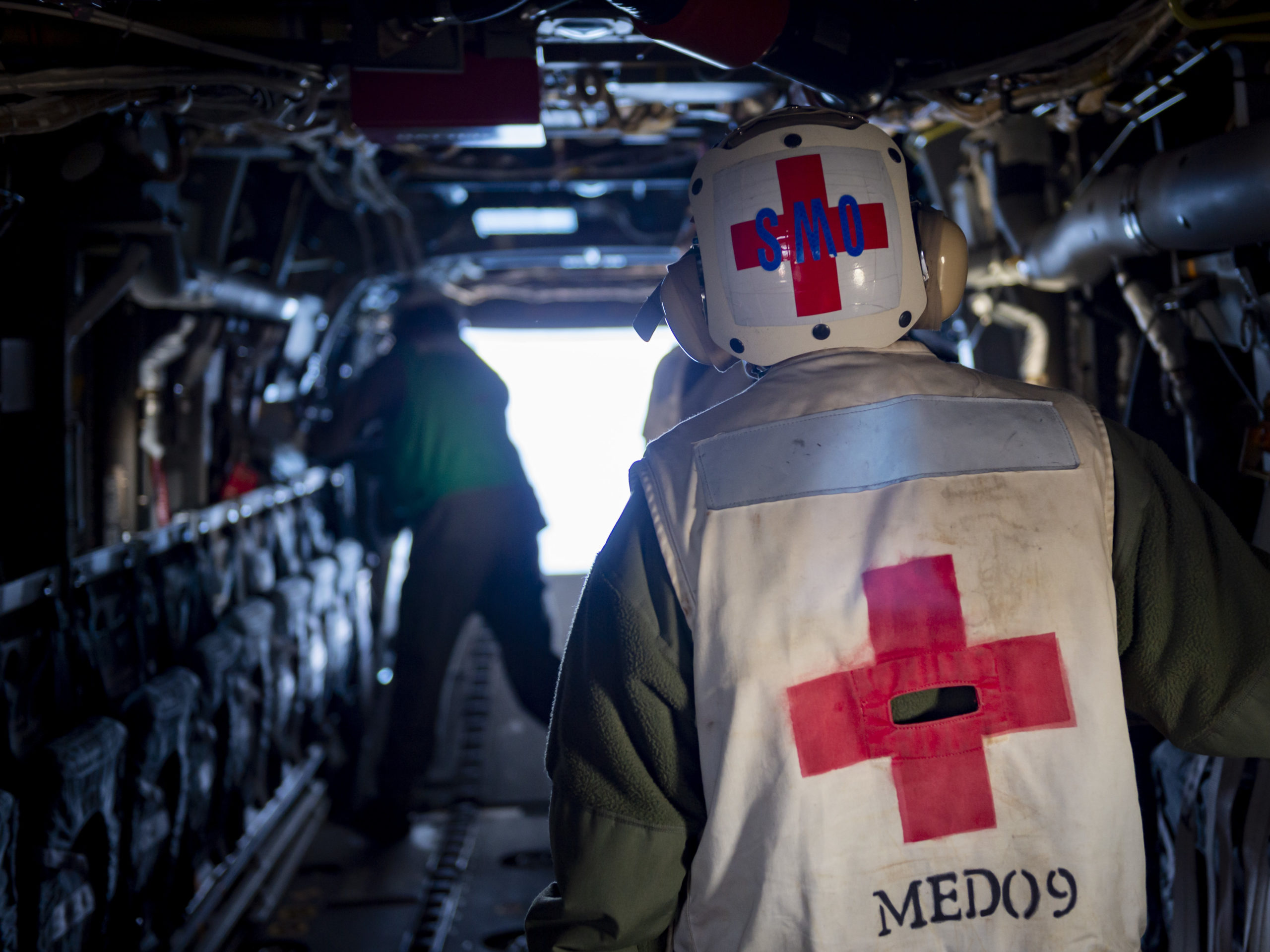The Differential Advantage of the CMV-22B
With geopolitical tensions rising in multiple regions of the world, it is very clear the United States military must be prepared to fight and win against a peer or near peer adversary.
The increased capabilities shown from potential adversaries are driving the need for rapid development of modern warfighting systems along with a renewed focus on industrial capacity and production.
One will assume our colleagues in uniform are war-gaming countless scenarios to determine:
- If we have the capabilities to deter and/or defeat a peer/near-peer adversary
- If we have the equipment, parts, and the support structure to support a lengthy conflict.
These scenarios will be less like Operations in Grenada and Panama, and more like, in terms of size and scope and not location, Desert Storm.
In the case of an Indo-Pacific fight, we would have to be ready for a scenario we have not seen for 80 years.
The sheer size of the Pacific Area of Operations and the potential logistical capability gaps that will undoubtedly come to light when exploring Expeditionary Advanced Base Operations (EABO), Distributed Maritime Operations (DMO), and Littoral Operations in a contested environment, will drive Combatant, Joint Force and Component Commanders to spend as much time planning how to support the force as they will planning to employ it.
The requirement to move cargo between dispersed Expeditionary Advanced Bases (EABs), Forward Logistic Support Sites (FLSS), and future Light Amphibious Warships (LAW) at sea will prioritize the need for a dedicated logistics connector.
How the Joint Force leverages the versatility and capability of its aviation forces will be key and tiltrotor technology will play an essential role.
Securing the tiltrotor industrial base is something the Defense Department and Congress need to pay special attention to as it looks toward the future of rotary-wing aviation. They must contemplate the tiltrotor industrial base in Bell’s Amarillo and Fort Worth centers and Boeing’s Philadelphia facilities. They must also consider the 500-plus suppliers who support this program today and must continue to sustain it well into the 2050s and beyond.
The speed, range, endurance, overmatch, versatility, and operational flexibility the V-22 has demonstrated over decades of performance, including combat, paved the way for the Navy to develop its own variant of the Osprey.
The versatility of the Navy’s CMV-22B gives naval commanders the flexibility to seize opportunities faster and far beyond current rotary wing capabilities.
It also opens the door to new missions and operational possibilities that provide the Navy with a “Differential Advantage” it needs when it comes to solving the problem of contested logistics and support to a distributed fleet and joint force.
With two operational deployments completed for the U.S Navy, commanders are learning the CMV-22 is far more than a Carrier On-board Delivery (COD) replacement. The CMV has excelled in a medical evacuation role (MEDEVAC), with an increased range, speed, and ability to inflight refuel, capabilities that far exceed the legacy MH-60S. Just as the Marine Corps found new and creative ways to leverage tiltrotor technology, the Navy will also learn how to operate and integrate the Osprey into the Carrier Airwing and support the fleet.
If the Navy is going to leverage the CMV to solve complex logistics problems in contested environments and fully support the Fleet, the Navy will require more aircraft than the current Program of Record (PoR).
What the Navy must do, is come to grips with the reality that the V-22 production lines in Philadelphia and Amarillo could come to an end in the not-too-distant future.
The Navy must leverage every opportunity to cost consciously add to the Navy’s PoR and avoid any negative impacts on future sustainment challenges by maintaining capability and capacity for spare parts with an active production base and supply chain.
Bell Boeing has decades of experience producing Ospreys, and that expertise will be required if we are going to continue to sustain and upgrade the V-22 into the latter half of the century. Protecting the nation’s only tiltrotor industrial base by ensuring we have a “hot production line” and establishing a long-term Tip-to-Tail Performance Bases Logistics contract (PBL) are good starting points if our nation’s leaders are serious about having the force structure the Navy needs to ensure it can sustain the required logistical throughput in a contested environment.
Christopher “chet” Misner is a retired Navy Captain who flew the SH-60F, HH-60H, T-45, and commanded the “Red Lions” of HS-15, Naval Air Station Kingsville, UVa NROTC, and is employed as a Senior Manager at Bell.
These are his personal opinions.
Featured Photo: Feb. 16, 2021) Senior Medical Officer, Cmdr. Mary Hessert, a native Wausau, Wis., conducts a medical inspection inside of a CMV-22B Osprey from the “Titans” of Fleet Logistics Multi-Mission Squadron (VRM) 30 on the flight deck of Nimitz-class nuclear aircraft carrier USS Carl Vinson (CVN 70). (U.S. Navy photo by Mass Communication Specialist 3rd Class Aaron T. Smith/Released)

